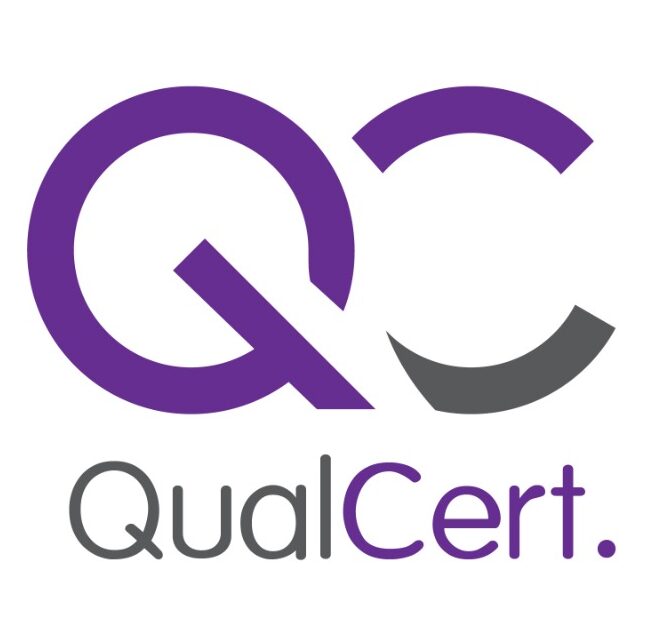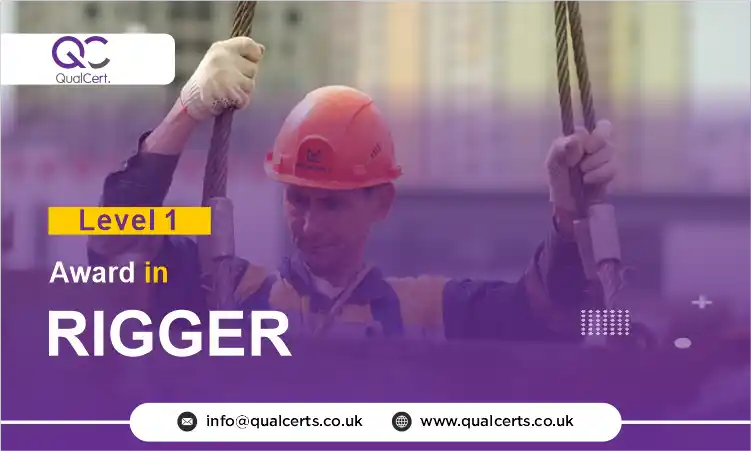The QualCert Rigger Level 1 Certificate Course is a comprehensive training program designed to equip individuals with the fundamental knowledge and practical skills required for safe and efficient rigging operations. This internationally recognized course follows global safety and operational standards, ensuring that participants are well-prepared to perform lifting and rigging tasks in compliance with regulations such as OSHA, LEEA, ASME, and LOLER.
This five-day intensive program covers the essential principles of rigging, focusing on safe lifting techniques, rigging hardware selection, and basic load calculations. Participants will learn how to inspect lifting equipment, identify potential hazards, and apply best practices for maintaining a safe work environment. The course blends theoretical knowledge with hands-on training, allowing candidates to develop confidence in executing basic rigging tasks under the supervision of experienced instructors.
Throughout the training, emphasis is placed on rigging safety, weight estimation, slinging methods, and communication protocols such as standard hand signals and radio coordination. Participants will also gain insight into risk assessment procedures, industry regulations, and emergency response strategies, ensuring a well-rounded understanding of rigging operations. By the end of the QualCert Rigger Level 1 Certificate Course , candidates will be able to demonstrate competence in basic rigging techniques, conduct pre-use inspections of lifting gear, and apply industry-approved safety measures.
The final assessment includes both a written examination and practical evaluation, ensuring that participants meet the required competency standards for certification. Upon successful completion of the QualCert Rigger Level 1 Certificate Course, participants will receive the QualCert Rigger Level 1 Certificate, validating their ability to perform basic rigging duties safely and effectively. The QualCert Rigger Level 1 Certificate Course serves as a stepping stone for those aspiring to advance in the rigging profession, opening opportunities in industries such as construction, oil and gas, logistics, shipyards, and heavy industries.
Course Contents of QualCert Rigger Level 1 Certificate Course
The QualCert Rigger Level 1 Certificate Course offers 10 Credits, requiring a Total Qualification Time (TQT) of 50 hours, including 35 Guided Learning Hours (GLH).This course provides a structured understanding of rigging safety, equipment handling, and practical lifting techniques.
| Unit Ref# | Unit Title | Credit | GLH | TQT |
| QC13013-1 | Fundamentals of Rigging and Hoisting | 2 | 7 | 10 |
| QC13013-2 | Safe Use of Lifting Equipment | 2 | 7 | 10 |
| QC13013-3 | Rigging Hardware and Inspection Procedures | 2 | 7 | 10 |
| QC13013-4 | Load Weight Estimation and Stability Factors | 2 | 7 | 10 |
| QC13013-5 | Practical Rigging and Load Lifting | 2 | 7 | 10 |
Entry Requirements for the QualCert Rigger Level 1 Certificate Course:
To enroll in the QualCert Rigger Level 1 Certificate Course, candidates must meet the following requirements:
- Minimum 18 years of age to comply with industry safety and legal regulations.
- Basic literacy and numeracy skills to understand rigging principles, load calculations, and safety guidelines.
- Proficiency in the language of instruction (typically English) for clear communication and comprehension of course materials.
- Physical fitness and ability to work in demanding environments, including lifting, climbing, and working at heights.
- No prior rigging experience required, but a basic understanding of lifting operations is beneficial.
These requirements ensure that candidates are adequately prepared to learn and apply fundamental rigging skills in a safe and efficient manner.
Learning Outcomes: QualCert Rigger Level 1 Certificate Course:
Fundamentals of Rigging and Hoisting
- Understand the basic principles of rigging and hoisting in compliance with UK and international safety standards such as LOLER and PUWER.
- Identify different types of lifting operations and their applications in various industries.
- Recognize potential hazards associated with rigging and implement safety measures to mitigate risks.
Safe Use of Lifting Equipment
- Demonstrate proper handling and operation of lifting equipment, including hoists, cranes, and slings.
- Apply industry best practices for the safe use, maintenance, and storage of lifting gear.
- Follow legal and regulatory requirements for lifting operations, ensuring compliance with UK health and safety laws.
Rigging Hardware and Inspection Procedures
- Identify different types of rigging hardware, including shackles, hooks, eyebolts, and wire ropes, and their specific uses.
- Conduct thorough pre-use inspections to detect wear, damage, and defects in rigging equipment.
- Maintain accurate inspection records and understand reporting procedures in accordance with UK safety regulations.
Load Weight Estimation and Stability Factors
- Calculate load weight and determine the center of gravity to ensure safe lifting and load stability.
- Assess environmental factors such as wind, ground conditions, and load distribution that affect lifting operations.
- Apply correct slinging methods and angle calculations to prevent load shift and instability.
Practical Rigging and Load Lifting
- Execute basic rigging tasks using proper lifting techniques and best industry practices.
- Perform safe and controlled lifting, lowering, and positioning of loads under supervised practical assessments.
- Demonstrate competency in applying rigging skills in real-world scenarios while adhering to UK workplace safety standards.
These learning outcomes ensure that participants develop the foundational skills and knowledge required to carry out rigging operations safely and efficiently, in line with UK and international best practices.
The QualCert Rigger Level 1 Certificate Course is designed for individuals who want to develop foundational rigging skills and knowledge to work safely in lifting and rigging operations. This course is ideal for:
- Entry-level workers looking to start a career in rigging and lifting operations across various industries.
- Construction and industrial workers who need formal training in basic rigging techniques and safety procedures.
- Warehouse and logistics personnel involved in material handling and lifting tasks.
- Oil and gas industry workers required to perform rigging duties in offshore and onshore environments.
- Crane operators and lifting assistants seeking to improve their understanding of safe rigging practices.
- Health and safety officers responsible for overseeing lifting operations and ensuring compliance with safety regulations.
- Maintenance and plant workers involved in lifting and moving heavy machinery and equipment.
This course provides essential training for individuals who want to work in rigging or those who require certification to meet industry safety standards and legal requirements.

